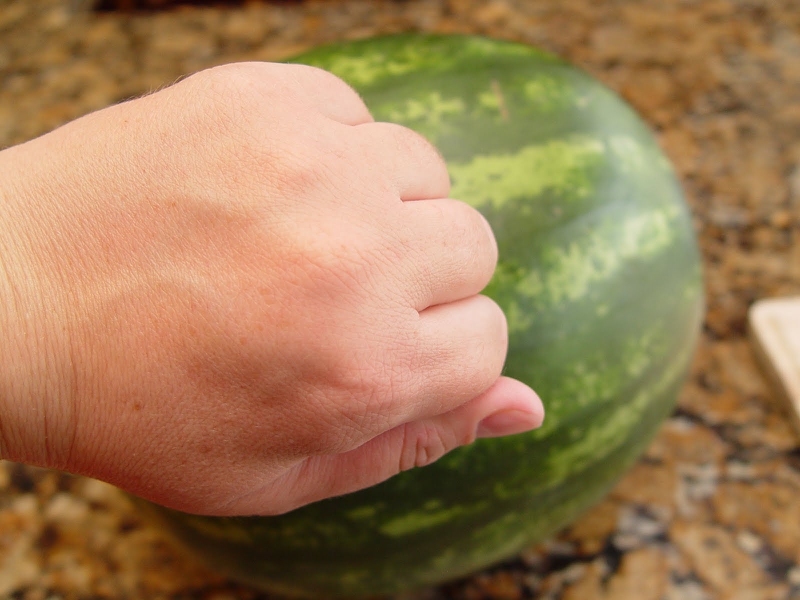Summers are complete only when the watermelon is ripe as unripe ones are big letdowns. Just imagine cutting open a watermelon only to find it unripe, not sweet and juicy. Watermelons will not become ripe after they have been picked, so it is worthy to spend some time in choosing the watermelon to avoid disappointment. Some tips are given below to help choose a ripe one.

How to Tell If a Watermelon Is Ripe
Choose the Heavier One
Select a few melons of the same size and weigh them. The ripe one usually contains more than 90% water and is heavier. Pick the one which feels like the heaviest of the lot, as recommended by the National Watermelon Promotion Board.
Check the Resting Spot
The spot where the melon rests on the ground can show whether it is ripe. If the spot is cream-yellow, yellow-white or yellow, the melon is ripe. However, if the spot is white or pale green, the melon has not matured. The resting spot of watermelon will change color from green to olive-grey or yellowish brown.
Check the Sound
Thump the watermelon lightly. If you hear a hollow, dull thump, the melon is usually ripe. This technique will take practice and may not be always correct, as it does not indicate if the melon is overripe. If the melon is unripe, the sound will be tighter with a metallic ringing.
Check the Rind
If you try to the dent the rind at the soil spot, it should resist since the rind will have tough end. Also if the melon is ripe, the outer layer will slip back when you are scratching the surface of the rind and show a green-white color under the rind. You can feel ribbed indentations with your finger tips on a ripe melon. The rind should be firm to touch; if it is spongy, the melon has gone bad.
Check the Tendril
A very green tendril indicates an unripe melon. If the tendril is curled near the steam and starts to dry up, and the melon is harvested at this point, it should be ripe.
Count the Days
If you have a little knowledge about the watermelon variety, you can utilize this technique. Counting the number of days from the time of plantation or from the day of flowering you can determine by when the watermelon is supposed to ripen. The normal temperatures and fertilizer regime can also be critical in this technique.
Growth Cease
Once you notice that the growth of the watermelon has stopped, you can check for other signs to determine ripeness and harvest the melon.
Check the Stem
In a ripe watermelon, the area near the stem develops small cracks. If the stem appears half dead, the melon could be just ripe and if the stem is completely dead, it could mean the melon has been spoilt by fungus, has ripened or overripened.




View All Comments /Add Comment